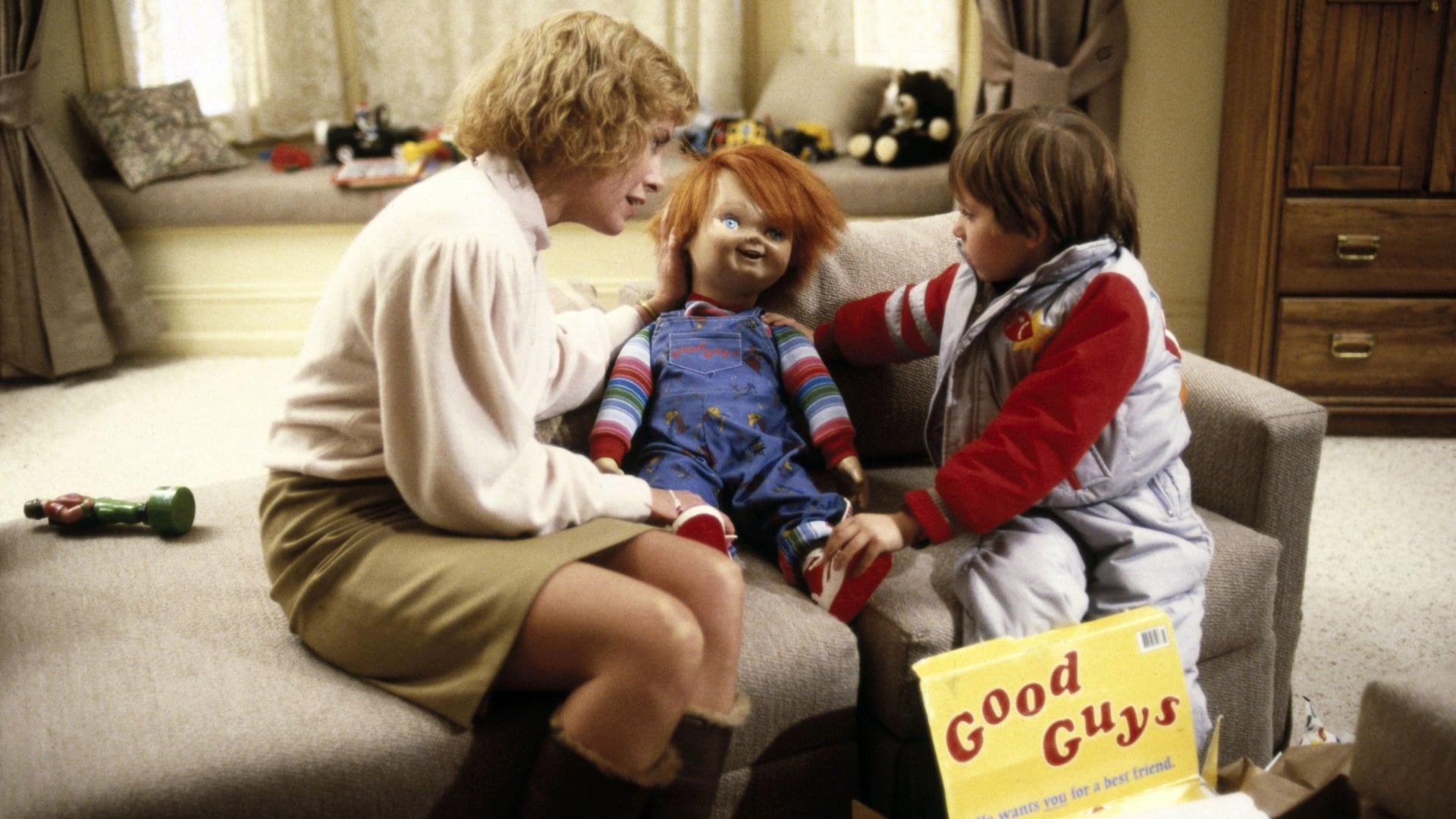
In Extremis: Child's Play and Liability for Defective Toys
Disclaimer: Note that just like your favourite childhood stuffed animal this article is just for fun. So, if you want to be a “good guy” go ask an adult to obtain independent legal advice if you have wanted to argue that a possessed doll killed your babysitter.
It’s finally time to talk about everyone’s favourite homicidal doll. (No, we are not talking about Annabelle). With the Child’s Play reboot coming out, I wanted to discuss a topic near and dear to everyone’s heart; product liability for children’s toys!
Oh, you don’t think so? Well strap on your horror hat and read this short article about a child in Arizona that ingested an aqua bear containing the properties of a date rape drug which caused brain damage; or the recall on Cabbage Patch Kids Snacktime Kids dolls that got children’s fingers and hair stuck in their battery powered jaws.(1) And we all know how much lead paint was in all our toys in 2006, am I right folks?!(2)
Now that you are legitimately fearing for your children, let’s get back to some lighthearted fun. Would Playpal, the company that makes the Good Guy dolls in Child’s Play (1988), be liable for their product harming people? Not in the way you might assume.
In the original film Playpal is not liable for Chucky’s murders. There is no evidence presented onscreen that the original dolls are hazardous. The doll being possessed by serial killer Charles Lee Ray is what made it dangerous. This is called an intervening cause (novus actus interveniens), and to prove negligence by the product manufacturer/retailer/etc. you must prove they caused the harm that you are seeking to be compensated. in this circumstance the harm was caused by a different entity occupying the toy and was not a defect in the toy itself.
However, I do have to raise some issues with the actual Good Guy dolls. The original Good Guys boxes(3) do not have a recommended age for children; nor do they have any warnings about small parts being a choking hazard, etc. The replicas you can get online in fact specify ages 15+, which is rather humourous for a fairly regular doll.(4) Andy is six years old when his mom purchases the doll for him, and the marketing in the film is targeting younger children as the intellectual property is associated with a children’s cereal and cartoon show. Therefore, PlayPal needs to have greater safety warnings and test their toys to ensure that they comply with various standards.(5)
There are usually two tests applied by juries in product liability cases:
- the consumer expectations test; and
- the risk-utility test
The first is whether the consumer would reasonably consider it defective. Both the Good Guy doll and the tool chest are not defective in that they perform their proper function (unless possessed), but the labeling may be considered defective as we shall see. The risk-utility test is that the company is liable for injuries if the probability of injury times the gravity of injury under the current product design is more than the cost of an alternative reasonable design plus the diminished utility resulting from modifying the design. That is a lot of faux math to say that the design is defective if you are more likely to be injured by this product over a different design of the product that can do the same thing.
The D batteries that go into the Good Guy doll are okay as it is accepted wisdom that anything smaller than a D battery is a choking hazard.(7) It is unclear whether the Good Guy eyes can come off easily as we do not see it in this film, although it is unclear if Chucky’s would come out due to the doll slowly turning into a human. The eyes would be small enough to be choking hazards that were not warned about, which is a defect in the warning system for the product.
Furthermore, there is a Good Guys "Tool Chest" with dye cast metal tools. The tool chest specifies it is for ages 4+, is safe, and non-toxic. It does not mention adult supervision, and the babysitter is not in fact watching while Andy plays with his real hammer; the same hammer Chucky uses to knock the babysitter out of a window. It is also unclear if the pocket knife Chucky uses was made by PlayPal or conveniently matched his aesthetic. There is some clear consumer expectation that when you buy a 6 year old dye cast metal toys, they or someone else may get injured, which would rebut the consumer expectation test; however if Chicago used the risk-utility test, there is a limited amount of utility, teaching a 4+ year old how to use tools, versus the risk of a child killing their babysitter, or even just losing a finger as the tool chest comes with a saw. Therefore, the tool chest is mislabeled ages 4+ which caused harm in the film.
Overall in Child’s Play (1988) it would come down to whether a jury thought it was appropriate and safe to market and sell the Good Guy doll and tool set to be used by a 6-year-old. There may also be some contributory negligence as Andy’s mom bought the toys and believed they were appropriate for her son. However, since Chucky intervened, PlayPal may be able to get away with a recall; which does not exempt their liability but does reduce the amount of kids with the toys who may get injured.
In the new film, producers have confirmed that the Good Guy doll is a malfunctioning robotic/AI toy. This is the Small Soldiers (1998) reboot we did not know we needed. There is likely a much greater chance that the company is liable if they designed the microchips, robotic parts, and memory for the Chucky doll to go on a killing spree. I look forward to seeing it up on the big screen.
I will give the original Child’s Play a 5/10 for legal realism (what toy company does not put an age range on some of their toys and a lot of hazard warnings) and a 7/10 as a film (one of my favourites when I was 8). I await Child’s Play (2019) and may add to this article upon release.
- Note that testing by Mattel and the CPSC did not identify a serious safety hazard associated with the dolls; United States Consumer Product Safety Commission, Mattel and the U.S. Consumer Product Safety Commission Announce Voluntary Refund Program for Cabbage Patch Kids & Snacktime Kids Dolls. Published January 6th, 1997, accessed online April 18, 2019. https://www.cpsc.gov/Recalls/1997/mattel-and-the-us-consumer-product-safety-commission-announce-voluntary-refund-program.
- United States Consumer Product Safety Commission. Mattel, Fisher-Price to Pay $2.3 Million Civil Penalty for Violating Federal Lead Paint Ban, Penalty is highest ever for CPSC regulated product violations. Published June 5th, 2009, accessed online April 18, 2019 https://www.cpsc.gov/content/mattel-fisher-price-to-pay-23-million-civil-penalty-for-violating-federal-lead-paint-ban.
- HalloweenManty – Garrett Zima, Original Chucky Good Guy Boxes Child’s Play. Published on 21 August 2017, accessed online April 18th, 2019. https://www.youtube.com/watch?v=LJ4cxQndGc8.
- Child’s Play Talking Good Guy Doll Chucky 15 Chucky, by Child’s Play https://www.amazon.ca/Childs-Play-Talking-Good-Chucky/dp/B01DMW6W5O
- If the toy makes noise it must be tested to ensure the decibels could not harm a child’s ears; if the doll has stuffing it must be tested for toxicity, choking hazards, etc.; and there are myriad more tests mandated by the United States Consumer Product Safety Commission, Retailers: Product Safety and Your Responsibilities.
- Restatement (Third) of Torts, Product Liability (1997 ed.). §2(b).
- Queensland Health, The deadly household object causing our kids harm, in more ways than one. February 18, 2019. https://www.health.qld.gov.au/news-alerts/news/button-batteries-danger-young-kids-emergency

